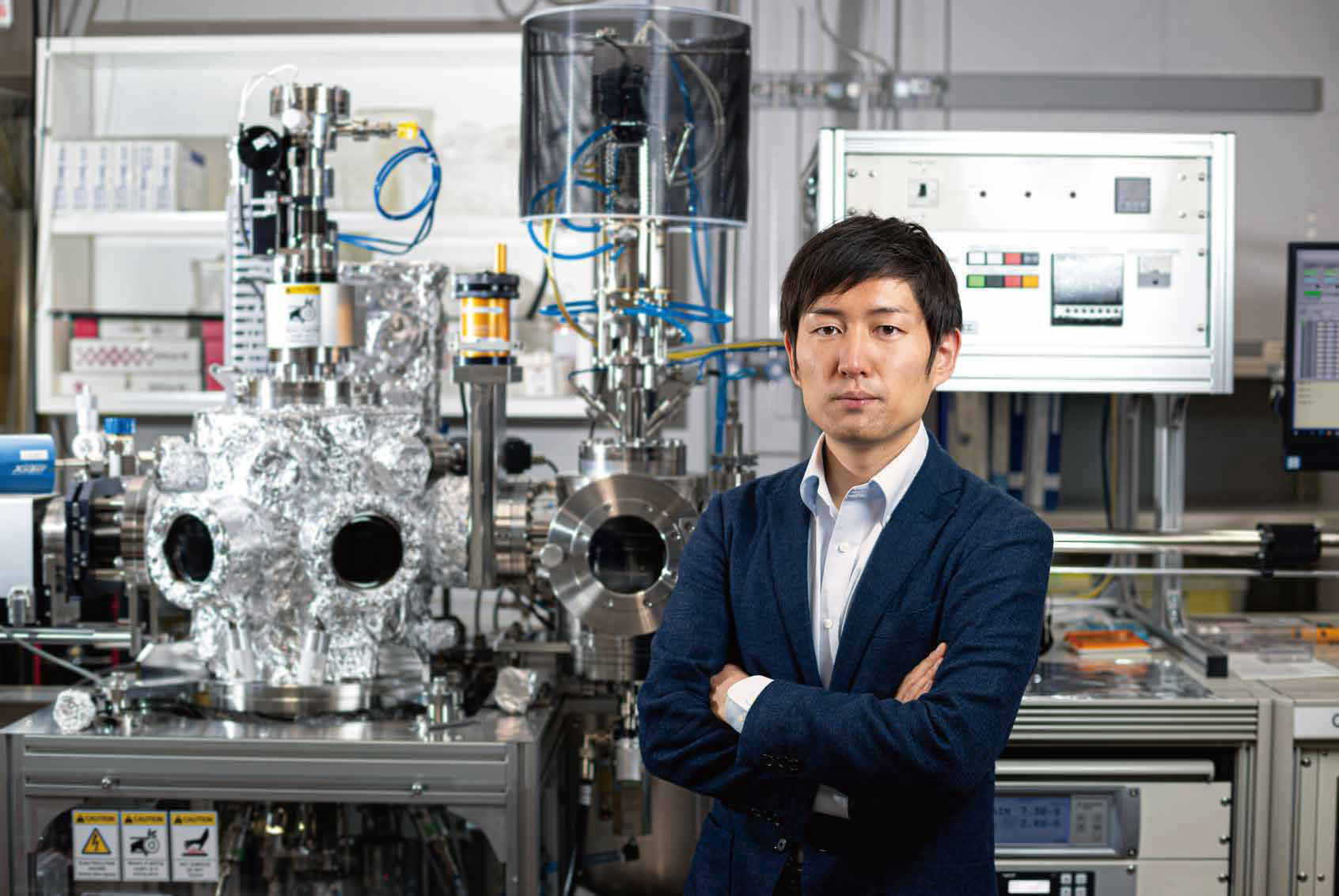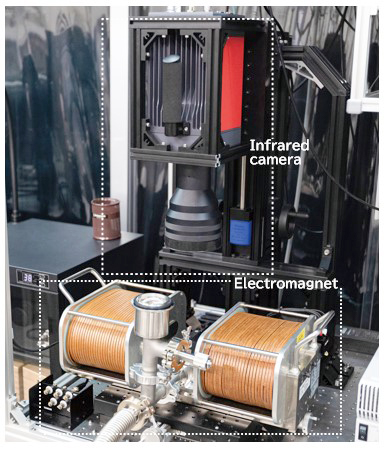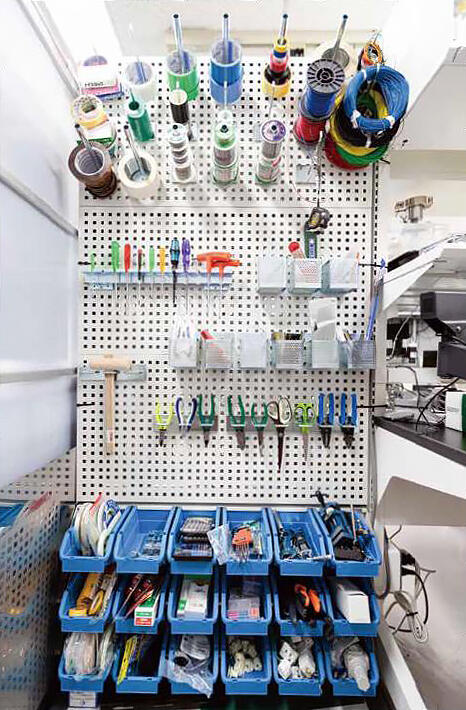Dr. Ken-ichi Uchida, Group Leader of the Spin Caloritronics Group, Research Center for Magnetic and Spintronic Materials, National Institute for Materials Science has succeeded in the world's first observation of the interconversion of heat and spin, a source of magnetism. Setting his next goal to clarify the principles for controlling heat energy using spin, Dr. Uchida aims to establish technology that will enable the manipulation of heat, which presents handling difficulties, and develop next generation energy conversion materials.

National Institute for Materials Science
Spin Caloritronics Group,
Research Center for Magnetic and Spintronic Materials
Group Leader
Researcher at PRESTO, 2012-2018
Research Director of CREST since 2017
Discovery of heat-spin conversion phenomena
Japan opens a new field of research
Spin caloritronics, the new research field that focuses on the interaction of spin and heat, advanced dramatically with the discovery and clarification of a number of spin transport phenomena by Dr. Ken-ichi Uchida, Group Leader at the National Institute for Materials Science. "Watching the development of spin caloritronics worldwide as a result of our research, and the maturing of that research, has been a great blessing," says Dr. Uchida. In the course of the research for his graduation thesis at Keio University, he discovered the spin Seebeck effect, which generates spin current, or flow of magnetism, by applying a temperature gradient to magnetic material, and published his findings in "Nature" in 2008. It is extremely rare that a graduation thesis is published in such a prestigious journal.
The existence of spin current was known, but it was difficult to observe due to the short propagation length of spins. It was only after entering the 21st century that a method of generating and detecting spin current was gradually established. Successful confirmation of the interaction between spin and heat currents was a dramatic finding that has added a new page to the physics textbook. While this finding received acclaim from around the world, criticism and doubts arrived too. "To prove the spin Seebeck effect, I performed systematic measurements and continued to release the results step-by-step." In 2010, Dr. Uchida discovered the spin Seebeck effect in an insulator, which does not conduct electricity and showed the world the potential of thermoelectric conversion technology using an insulator.
Dr. Uchida was appointed Group Leader at the National Institute for Materials Science in 2016. "It was my first time leading a research group, so I made the decision to establish new research on my own. To start, I set the research aim to be 'manipulating heat using spin.'" In spin Seebeck effect research, heat was the driving source of spin current, but Uchida's idea was to reverse this to see whether spin could be used to control thermal energy. Heat is abundantly present in our daily lives and is attracting attention as a potential energy source, but it is harder to control than light or electricity. The development of spin caloritronics, however, has led to discoveries in the basic physics and functional principles of the interconversion of spin, heat, and electricity.
Aiming to establish unique heat control technologies that can be realized only by using spin, the research group began to observe a variety of thermoelectric effects driven or mediated by spin. With excellent timing, CREST established a research project with the objective to control heat on a nano scale. Dr. Uchida's project was selected, which helped to boost his efforts. Looking back, he says, "It was a real turning point for me as a researcher."
Direct observation of heat current generation
The secret of success was experiment design
"A particularly successful experiment was the world's first observation of the 'anisotropic magneto-Peltier effect' the results of which were published in 2018." This is a thermoelectric conversion phenomenon in which simple redirection of the flow of a charge current in a magnetic material, such as nickel, induces heating and cooling. The Peltier effect is a phenomenon in which the application of a charge current to metals or semiconductors generates a heat current in the direction parallel to the charge current. Previously, changes in temperature attributed to the Peltier effect were believed to occur only at the junction between two different materials. However, Dr. Uchida proved a new heat control function that can manipulate the release and absorption of heat if a non-uniform spin or magnetization distribution was created (Fig.1).

"The presence of the anisotropic magneto-Peltier effect has been predicted for decades, but there was no method by which to directly observe the phenomenon." Dr. Uchida's powerful tool was a technique for measuring heat called lock-in thermography (Fig. 2). After applying a periodic signal, such as a charge current, to the material, highly sensitive imaging of the temperature oscillation that occurs in response to the current is carried out using an infrared camera. Using this method, Dr. Uchida achieved the world's first thermal imaging measurement of the spin Peltier effect, which generates heat current from spin, and of the magneto-Thomson effect, in which heat is released and absorbed in response to the application of a charge current to a conductor under a temperature gradient, with the change depending on a magnetic field.

Having an expensive device does not always mean that you can measure a phenomenon. The secret to Dr. Uchida's success is his exceptional sense of experimental design. This was honed in his student days as he devoted himself to experiments, and he was able to figure out how the thermoelectric/thermo-spin conversion phenomena would appear. "I am a worrywart, but in a good way. I check the experiment design and conditions thoroughly again and again, just to make sure there are no mistakes. For me, the thrill of research comes in that moment of confirming the anticipated physical phenomenon with my own eyes" Dr. Uchida explains.
Meeting people maximizes results
Fusion of ideas leads to new research
Dr. Uchida recalls, "I had no intention of becoming a researcher." Even after he had completed his doctorate and taken up a post as assistant professor at Tohoku University, he was worried whether he would be able to become an independent researcher. He always kept in mind that he would have to work harder than others, and that he "would not be quick to catch on a trend or copy the research of others," and as a result has consistently been conducting his own, unique research. Dr. Uchida stresses, "Studying textbooks and conducting research are completely different. The ability to understand textbooks and to do good research are not necessarily directly correlated." He continues to explain, "Study is learning what is known, but research is breaking new ground in the unknown. Research is accompanied by difficulties and failures. That is why, to enjoy research, it is important to believe in what you are doing, fully commit to doing it and have the will to push through the hard times."
Dr. Uchida truly feels that the success he has achieved is a product of all the people he has met along the way. He still has interactions with PRESTO researchers, whose diverse ideas are a great asset to him. "Research cannot be conducted alone," he says, recalling his supervisor from his student days, Professor Eiji Saitoh (presently at the University of Tokyo). Dr. Uchida continues talking about his enthusiasm for research, "Back then, I floated the fanciful idea that spin could be generated by heat. Professor Saitoh took me seriously, discussing it and giving me advice. Now that I am a principle investigator, I hope to fulfill my role as the leader of my group so that our members can efficiently achieve the best possible results."
Dr. Uchida's dream is to "See the research field I have worked to develop through until it makes useful contributions to society in the future." If highly efficient thermoelectric and thermo-spin conversion is achieved, realization of technologies useful for energy savings, such as energy harvesting and heat-flux sensing can be expected. Dr. Uchida makes his measurement methods public through journal articles and lectures to facilitate entry into the spin caloritronics research field by industries and researchers of different disciplines. He expects a fusing of ideas will generate new fields research beyond current patterns and ideas. To achieve this, Dr. Uchida stays steadfast, stating, "I will continue this journey to find new principles and materials and to discover phenomena that have yet to be explored."





